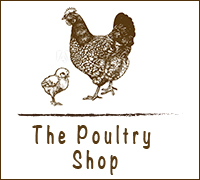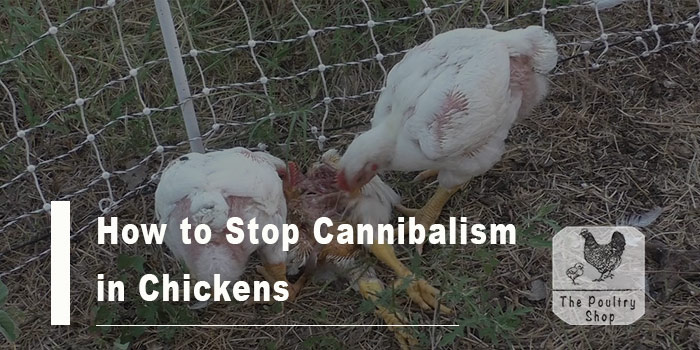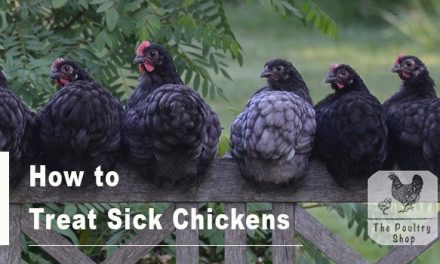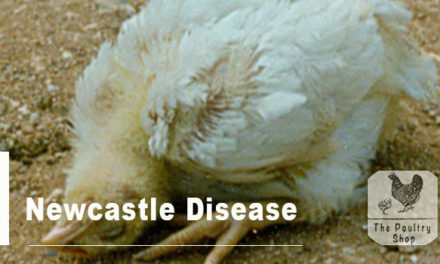Cannibalism in chickens is a costly and vicious habit that poultry farmers cannot afford to ignore. Cannibalism usually occurs when the birds are stressed by a poor management practice. Once becoming stressed, one bird begins picking the feathers, comb, toes or vent of another bird.
Once an open wound or blood is visible on the bird, the vicious habit of cannibalism can spread rapidly throughout the entire flock. If you notice the problem soon after it begins, cannibalism can be held in check.
However, if the problem is allowed to get out of hand it can be very costly. Cannibalism will lower the bird’s value due to torn and damaged flesh, poor feathering and can result in high death losses. Once this habit gets out of hand, it is difficult to eliminate.
Since there are numerous reasons for outbreaks of cannibalism, it is important that cannibalism control be a part of your management program.
Causes of Cannibalism in Chickens
A look at some of these causes can help give you an idea of why your birds are pecking on each other:
- Overcrowding
- Excessive heat
- Too much bright light in the fowl run
- Poor quality feed
- Poor ventilation
- Presence of injured, sick or dead birds in the fowl run
- Boredom/idleness
- Inadequate feeders, drinkers and nesting boxes
- Heredity (certain breeds tend to be aggresive by nature)
- Stress from movements/transportation
- Housing different breeds or ages in the same fowl run
- Birds prolapsing during egg laying
- Slow feathering birds are prone to attacks
- Introducing new birds to the flock
How to Treat/Prevent Pecking in Chickens
Treating cannibalism in the early stages is possible. However, prevention is much better than treatment. The following strategies can be used to tame the vice:
- Adequate spacing – allow 10 birds or less per sqm to avoid overcrowding and too much competition for space.
- Adjust brooding temperatures and increase ventilation as the birds grow in size. During hot days, putting ice in drinking water helps to cool the birds.
- Avoid bright light bulbs (especially white bulbs above 40watts) and exposing birds to prolonged periods of light. Opt for red bulbs, wattage below 40 watts and use red infrared lamps for brooders. Introduce dark hours as part of the light management program.
- Ensure adequate drinkers and feeders. Always monitor behaviour of birds and if they are fighting for feed or water, increase quantities accordingly. Laying hens often peck on each other if the nesting boxes are few. Allow for 1 nest for every 5 hens and do not place bright lights close to nesting boxes.
- Always use good quality feed that is balanced. Extremely high energy and low fiber diets cause the birds to be extra active and aggressive. Feed lacking protein and other nutrients, particularly Methionine, will also cause birds to pick feathers. Make sure you feed a diet balanced appropriately for the age and types of fowl you are raising.
- Raise birds of different breeds and sizes in different fowl runs or divide with fence to separate the birds if pecking is an issue. Be aware that some breeds are generally aggressive by nature.
- Isolate sick, injured or birds with proplase (protruding uterus after egg is laid). The sight of reddish wounds or blood motivates other birds to peck due to curiosity. Put Eyesaver ointment of aloe vera to the wound to ensure it dries off quickly so as to reduce exposure to pecking.
- Isolate slow feathering birds with other fowl as they are prone to be pecked on due to exposed skin areas.
- Introducing new birds to the flock can result to cannibalism as this dirupts the pecking order. Dermacating the fowl run with a fence for at least a week can help the birds to get to know each other.
- Birds that spend most of their time confined to small places tend to get bored and hence start pecking on each other. To remedy this, allow birds to free range if possible. Hang vegetables/cabbages/metal cans (or any shiny object) for the birds to pick at and forget about pecking the next bird.
- Use of mechanical devices like plastic peepers or blinders in aggressive birds is also advisable.
- Beak trimming is used in problem flocks. Trim the beak by removing about 1/3 of the tip of the beak providing a square tip. This makes it difficult for the birds to harm each other. However, beak trimming should be done by someone experienced in proper trimming.
Did you find this article helpful? Leave a comment below or subscribe to my free Email Newsletter and also like The Poultry Shop Facebook page. Thanks!





